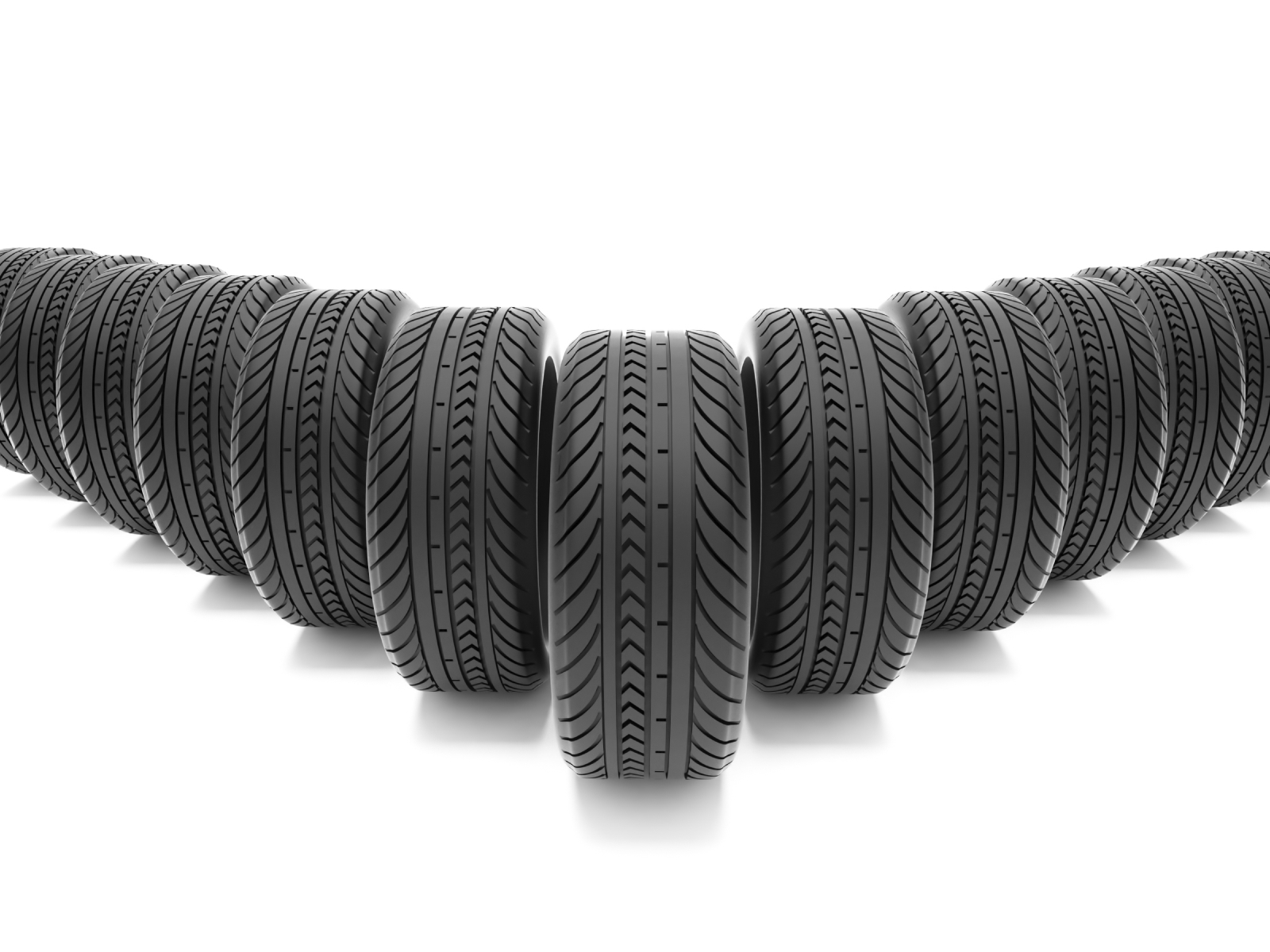Last Updated on April 21, 2024
Why Tire Recycling Fees Matters?
When shopping for new tires, you may have noticed an additional charge labeled a “tire recycling fee.” While it might seem like just another line item on your bill, this fee plays a crucial role in environmental conservation and sustainability. Let’s uncover the wheel truth about tire recycling fees and its significance.
What is the Tire Recycling Fee?
At its core, the tire recycling fee is a small charge added to the purchase of every new tire. This fee directly funds the proper disposal and recycling of old tires.
Why is it Important?
Tire recycling is essential because old tires can cause serious environmental problems. When thrown away, tires can pile up in landfills, take up a lot of space, and even become breeding grounds for pests. Recycling tires helps to reduce this waste, turning them into valuable products and saving our planet from harm. It’s a way to ensure we care for our environment for future generations.
- Environmental Conservation: Old tires can be a major ecological hazard when disposed of incorrectly. They can become breeding grounds for pests and, when piled up, become a fire risk. Proper recycling ensures these potential hazards are mitigated.
- Resource Optimization: Recycled tires can be repurposed into many products, from rubberized asphalt to playground surfaces. This conserves resources and reduces the need to produce new raw materials.
- Economic Benefits: The recycling process creates jobs and promotes a sustainable industry dedicated to making the most of old tires.

How Does This Fee Benefit You?
- Responsible Disposal: You can rest assured knowing your old tires are being disposed of in an eco-friendly manner.
- Supporting Green Initiatives: Your fee contributes to a greener planet, promoting sustainable practices and innovations in the tire industry.
- Community Advantages: Many local communities use funds from these fees for beautification projects and other communal benefits.
Transparency is Key
Consumers need to know where their money goes. Reputable tire retailers, like Tire Easy, are transparent about these fees and can provide insights into how the funds are utilized in supporting eco-friendly initiatives.
What is the dreaded “Tire Tax”?
You’re probably wondering why I must pay extra to throw your old tires away instead of paying for new ones.
A tire recycling fee, or “tire tax,” is a fee paid either:
a) on each new tire sold and
b) for disposing of your old tires after a new pair (or set) is installed.
The tire recycling fee is sometimes an environmental or a combination of the two. Regardless of what it’s called, it serves the same purpose: to fund the disposal of old tires. Each state has laws on tire recycling and fees that must be applied to new tire purchases.
How are tires recycled?
Not all tires become sad old swings once they’ve been retired from their useful life on the road. As you might have suspected, tires cannot be disposed of like other materials. They are nonbiodegradable (they do not break down and degrade over time), cannot be compacted (like plastic and metal), and remain in the same shape. Because of their sheer size and impenetrable rubber compound, tires are among the most problematic sources of waste we face today.
On the road, tires don’t last forever – the tread eventually wears down, or they sustain irreparable damage. But in the environment, tires can last forever. Worn-out tires used to be dumped in landfills to sit for perpetuity. In recent years, 44 states have restricted tire disposal at landfills.
Where do recycled tires go, if not the landfill?
Fortunately, new technology allows the tires to be broken down and specific components reused. Processes such as pyrolysis—heat is applied to rubber to soften it and turn it into fuel—and devulcanization (no, this isn’t a Star Trek reference)—reclaimed rubber—make it possible to reuse the rubber for other purposes. Tire material is extremely useful and can be repurposed in numerous ways, which is why many states have implemented tire recycling programs recently.
Since the implementation of scrap tire legislation, state-funded tire recycling programs have become instrumental in diverting scrap tires from stockpiles and landfills. These programs give tires a new home, just in slightly different forms.
Some larger tires are used as stone aggregate substitutes in civil engineering projects. Commonly referred to as TDF, tire-derived fuel is produced from the shredded form of tires and is used as a fuel source in power plants and mills.
How Recycling Fees Transform Landscapes and Playgrounds
The landscaping industry has greatly benefitted from the development of rubber mulch, which eliminates the need for annual mulching, promotes water retention in soil, and reduces mold, mildew, and fungus.
The next time you walk across a spongey playground or athletic turf field, you can see the result of hundreds of recycled tires underfoot!
Many states use funds collected from tire recycling fees to develop these recycling methods and divert these tires from an otherwise fateful eternity buried under piles of rubbish. The separate fee charged by your tire installer covers the cost of the private services that pick up old tires and dispose of them according to individual state regulations.
How much is the typical tire recycling fee?
Extra fees are an unfavorable element in any transaction, but the good news is that this disposal fee rarely exceeds $2.00 per new vehicle tire purchased in any given state. Some states, such as Indiana and Kansas, impose fees as low as 25 cents per tire. Oklahoma might have the most specific and expensive tire fee requirements compared to other states.
While the extra dollars may seem unnecessary, this small fee can divert millions of pounds of scrap tire material from landfills yearly! Ultimately, these fees are consistently implemented to combat the 111 million scrap tires currently lying in stockpiles across the U.S., with an additional 3.9 million tons generated each year.
Fast-Track Tire Facts
In 2015, the breakdown of recycled material from tires was as follows: 48.6% was diverted as TDF, 25.8% was processed as ground rubber, 11.4 % was land disposed of, 7% was used in civil engineering projects, and 7.1% was used for miscellaneous purposes.
Thirty-seven states have a mandated tire fee, the most common funding mechanism. Nationally, states’ continued implementation of legislation and regulation will spur the cleanup of remaining stockpiles nationwide. The funding generated from tire disposal fees will guarantee effective monitoring, tracking, certification, and enforcement protocols, which will likely significantly boost scrap tire waste prevention in the future.
After all, installing a tire swing is always a viable (and fun) option for your waste prevention efforts!

Tires-Easy has been supplying quality new tires online to United States consumers since 2004. We pride ourselves on delivering the best selection of top-quality tire products and unmatched customer service.
Learn more about our tire rebates, new tire product news, tire safety information, tire care & replacement information, and tire buying guides by visiting our comprehensive tire knowledge center.
Conclusion
The tire recycling fee isn’t just an added cost; it’s an investment in our environment and sustainable solutions. As consumers, understanding the “wheel truth” empowers us to see the broader picture — where every recycled tire contributes to greener landscapes and safer playgrounds.
Drive with Purpose with Tire Easy!
When you purchase tires from Tire Easy, you’re not just investing in top-quality rubber. You’re also participating in global sustainability and championing a greener planet. Ready to make a difference with every mile?
BUY your eco-conscious tires from Tire Easy today and drive with purpose!
FAQs
Is TYRE recycling profitable?
Tire recycling can be profitable, especially when the recycled materials are repurposed into valuable products such as rubber mulch, athletic turf, or other commercial applications. However, profitability depends on factors like technology used, scale of operations, and market demand for recycled products.
How much is the NYS tire recycling fee?
As of my last update, New York State imposes a tire recycling fee of $2.50 per tire sold within the state. However, fees can change over time, so it’s recommended to consult the official New York State Department of Taxation and Finance or the Department of Environmental Conservation for the most current information.
Who is the biggest tire recycling company?
The tire recycling industry consists of numerous major players worldwide. The “biggest” company can vary based on criteria like volume processed, global reach, or revenue. Companies like Liberty Tire Recycling and Eco Green Equipment are among the leaders in the U.S. Always refer to industry reports for the latest rankings.
What is the tire fee in S.C.?
South Carolina imposes a fee on the sale of new tires. As of my last update, the rate is $2 per tire for tires with a rim diameter of up to 12 inches and $5 for those with a rim diameter over 12 inches. Again, fees can change, so it’s a good idea to consult South Carolina’s official resources or state agencies for the most recent information.









